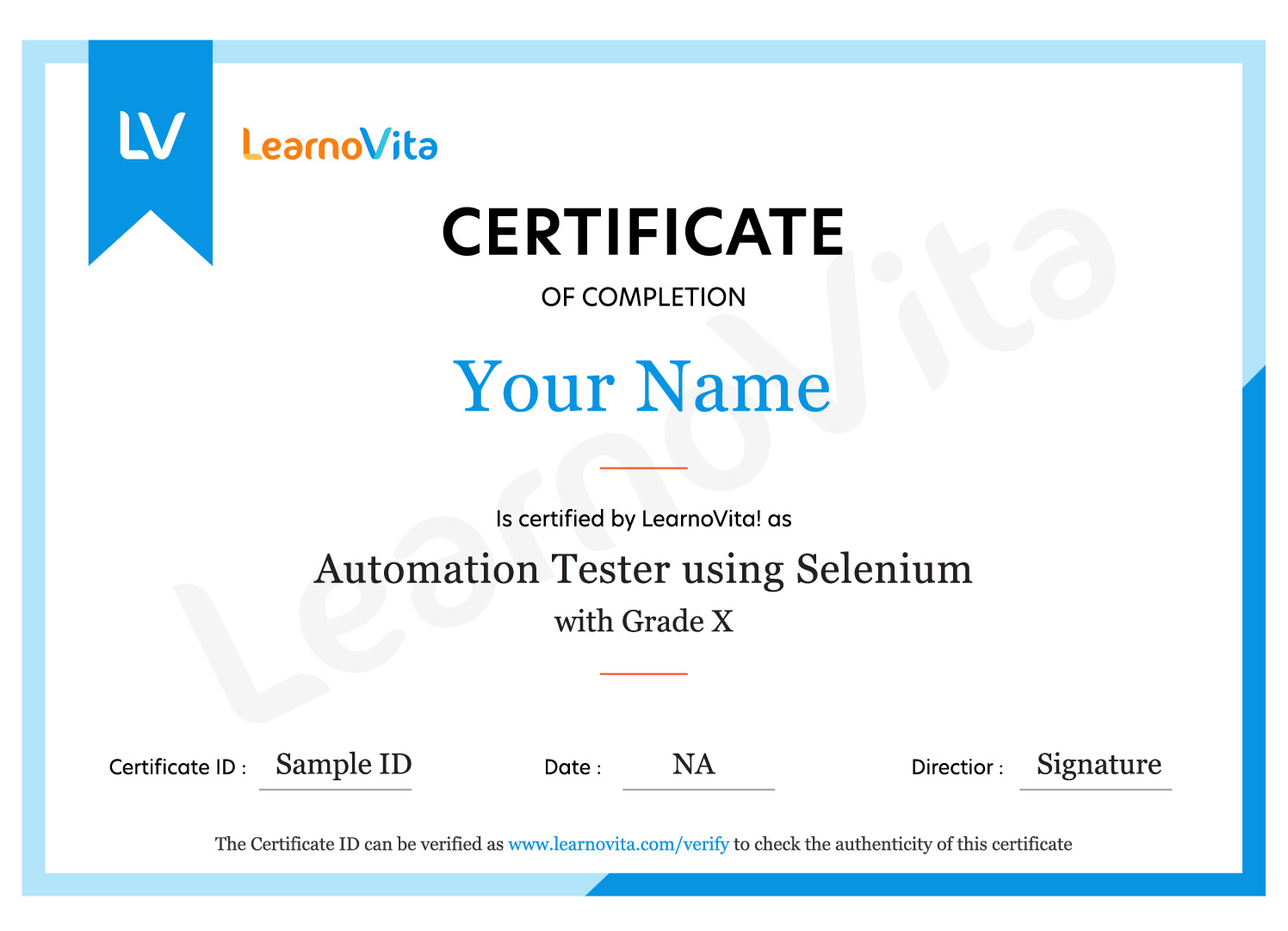What You'll Learn
Understand R programming basics: data types, vectors, matrices, lists, and functions.
Data Science with R Online Training Perform data cleaning, manipulation, and transformation with dplyr and tidyr.
Data Science with R Online Course Explore statistical analysis: descriptive stats, probability, hypothesis testing, and regression.
Implement data visualization: ggplot2, plotly, and interactive dashboards.
Apply machine learning models: classification, regression, clustering, and model evaluation.
Handle real-world datasets: data preprocessing, feature engineering, and handling missing values.
Data Science with R Training Objectives
- R is a highly extensible and easy to learn language and fosters an environment for statistical computing and graphics.
- All of this makes R an ideal choice for data science, big data analysis, and machine learning.
- As a programming language, R provides objects, operators and functions that allow users to explore, model and visualize data. R is used for data analysis.
- R in data science is used to handle, store and analyze data. It can be used for data analysis and statistical modeling.
- Warming up
- Setting up your machine
- Learn the basics of R language
- Understanding the R community
- Importing and manipulating your data
- Effective Data Visualization
- Data Mining and Machine Learning
- Reporting Results
- Introduction to data science life cycle
- In depth knowledge of most popular machine learning techniques
- Supervised and unsupervised learning techniques
- Real life case studies and simulated projects to sharpen your skill sets
- R has a reputation of being hard to learn. Some of that is due to the fact that it is radically different from other analytics software.
- Some is an unavoidable byproduct of its extreme power and flexibility. And, as with any software, some is due to design decisions that, in hindsight, could have been better.
- If you have experience in any programming language, it takes 7 days to learn R programming spending at least 3 hours a day.
- If you are a beginner, it takes 3 weeks to learn R programming. In the second week, learn concepts like how to create, append, subset datasets, lists, join.
- Yes, many learners start with no coding experience and go on to get jobs as data analysts, data scientists, and data engineers.
- R is a great language for programming beginners to learn, and you don't need any prior experience with code to pick it up.
- You need to update your programming skills in R programming regularly. It can only be possible by practicing every day.
- Write code on your own and validate your code with the solutions on the Internet. Consider time complexity and space complexity while writing R code.
- R is a programming language and free software. R possesses an extensive catalog of statistical and graphical methods.
- Most of the R libraries are written in R, but for heavy computational tasks, C, C++ and FORTRAN codes are preferred.
- Depends on your ability but still very difficult. You may start with running small programs like file open/ close by changing directory etc.,
- Writing real program may take longer time. But you will be very strong in R if you just learn the basics for 1 month with a real effort.
Request more informations
Phone (For Voice Call):
+91 89258 75257
WhatsApp (For Call & Chat):
+91 89258 75257
Benefits of Data Science with R Course
Data Science Certification Course equips you to perform statistical analysis, visualize data effectively, and implement machine learning models using R. Data Science with R Course with Placement opportunities in data analysis, data engineering, predictive modeling, business analytics, and AI roles. Data Science with R Projects strengthen hands-on skills for solving industry-relevant problems.
- Designation
-
Annual SalaryHiring Companies
About Your Data Science with R Training
Data Science with R Online Course teaches how to analyze, visualize, and model data using R. The course focuses on statistical foundations, R programming, machine learning, and practical applications on real-world datasets. Data Science with R Internship emphasizes both theory and hands-on practice to build strong analytics capabilities.
Top Skills You Will Gain
- R programming
- Data cleaning
- Statistical analysis
- Data visualization
- Feature engineering
- Predictive modeling
- Time-series
12+ Data Science with R Tools
Online Classroom Batches Preferred
No Interest Financing start at ₹ 5000 / month
Corporate Training
- Customized Learning
- Enterprise Grade Learning Management System (LMS)
- 24x7 Support
- Enterprise Grade Reporting
Why Data Science with R Course From Learnovita? 100% Money Back Guarantee
Data Science with R Course Curriculam
Trainers Profile
Trainers are certified professionals with 11+ years of experience in their respective domains as well as they are currently working with Top MNCs. As all Trainers from Data Science with R are respective domain working professionals so they are having many live projects, trainers will use these projects during training sessions.
Syllabus of Data Science with R Course Download syllabus
- What is Data Science, significance of Data Science in today’s digitally-driven world, applications of Data Science, lifecycle of Data Science, components of the Data Science lifecycle, introduction to big data and Hadoop, introduction to Machine Learning and Deep Learning, introduction to R programming and R Studio.
- Hands-on Exercise - Installation of R Studio, implementing simple mathematical operations and logic using R operators, loops, if statements and switch cases.
- Introduction to data exploration, importing and exporting data to/from external sources, what is data exploratory analysis, data importing, dataframes, working with dataframes, accessing individual elements, vectors and factors, operators, in-built functions, conditional, looping statements and user-defined functions, matrix, list and array.
- Hands-on Exercise -Accessing individual elements of customer churn data, modifying and extracting the results from the dataset using user-defined functions in R.
- Need for Data Manipulation, Introduction to dplyr package, Selecting one or more columns with select() function, Filtering out records on the basis of a condition with filter() function, Adding new columns with the mutate() function, Sampling & Counting with sample_n(), sample_frac() & count() functions, Getting summarized results with the summarise() function, Combining different functions with the pipe operator, Implementing sql like operations with sqldf.
Hands-on Exercise -Implementing dplyr to perform various operations for abstracting over how data is manipulated and stored.
- Introduction to visualization, Different types of graphs, Introduction to grammar of graphics & ggplot2 package, Understanding categorical distribution with geom_bar() function, understanding numerical distribution with geom_hist() function, building frequency polygons with geom_freqpoly(), making a scatter-plot with geom_pont() function, multivariate analysis with geom_boxplot, univariate Analysis with Bar-plot, histogram and Density Plot, multivariate distribution, Bar-plots for categorical variables using geom_bar(), adding themes with the theme() layer, visualization with plotly package & building web applications with shinyR, frequency-plots with geom_freqpoly(), multivariate distribution with scatter-plots and smooth lines, continuous vs categorical with box-plots, subgrouping the plots, working with co-ordinates and themes to make the graphs more presentable, Intro to plotly & various plots, visualization with ggvis package, geographic visualization with ggmap(), building web applications with shinyR.
- Hands-on Exercise -Creating data visualization to understand the customer churn ratio using charts using ggplot2, Plotly for importing and analyzing data into grids. You will visualize tenure, monthly charges, total charges and other individual columns by using the scatter plot.
- Why do we need Statistics?, Categories of Statistics, Statistical Terminologies,Types of Data, Measures of Central Tendency, Measures of Spread, Correlation & Covariance,Standardization & Normalization,Probability & Types of Probability, Hypothesis Testing, Chi-Square testing, ANOVA, normal distribution, binary distribution.
- Hands-on Exercise -– Building a statistical analysis model that uses quantifications, representations, experimental data for gathering, reviewing, analyzing and drawing conclusions from data.
- Introduction to Machine Learning, introduction to Linear Regression, predictive modeling with Linear Regression, simple Linear and multiple Linear Regression, concepts and formulas, assumptions and residual diagnostics in Linear Regression, building simple linear model, predicting results and finding p-value, introduction to logistic regression, comparing linear regression and logistics regression, bivariate & multi-variate logistic regression, confusion matrix & accuracy of model, threshold evaluation with ROCR, Linear Regression concepts and detailed formulas, various assumptions of Linear Regression,residuals, qqnorm(), qqline(), understanding the fit of the model, building simple linear model, predicting results and finding p-value, understanding the summary results with Null Hypothesis, p-value & F-statistic, building linear models with multiple independent variables.
- Hands-on Exercise -Modeling the relationship within the data using linear predictor functions. Implementing Linear & Logistics Regression in R by building model with ‘tenure’ as dependent variable and multiple independent variables.
- Introduction to Logistic Regression, Logistic Regression Concepts, Linear vs Logistic regression, math behind Logistic Regression, detailed formulas, logit function and odds, Bi-variate logistic Regression, Poisson Regression, building simple “binomial” model and predicting result, confusion matrix and Accuracy, true positive rate, false positive rate, and confusion matrix for evaluating built model, threshold evaluation with ROCR, finding the right threshold by building the ROC plot, cross validation & multivariate logistic regression, building logistic models with multiple independent variables, real-life applications of Logistic Regression
- Hands-on Exercise -Implementing predictive analytics by describing the data and explaining the relationship between one dependent binary variable and one or more binary variables. You will use glm() to build a model and use ‘Churn’ as the dependent variable.
- What is classification and different classification techniques, introduction to Decision Tree, algorithm for decision tree induction, building a decision tree in R, creating a perfect Decision Tree, Confusion Matrix, Regression trees vs Classification trees, introduction to ensemble of trees and bagging, Random Forest concept, implementing Random Forest in R, what is Naive Bayes, Computing Probabilities, Impurity Function – Entropy, understand the concept of information gain for right split of node, Impurity Function – Information gain, understand the concept of Gini index for right split of node, Impurity Function – Gini index, understand the concept of Entropy for right split of node, overfitting & pruning, pre-pruning, post-pruning, cost-complexity pruning, pruning decision tree and predicting values, find the right no of trees and evaluate performance metrics.
- Hands-on Exercise -Implementing Random Forest for both regression and classification problems. You will build a tree, prune it by using ‘churn’ as the dependent variable and build a Random Forest with the right number of trees, using ROCR for performance metrics.
- What is Clustering & it’s Use Cases, what is K-means Clustering, what is Canopy Clustering, what is Hierarchical Clustering, introduction to Unsupervised Learning, feature extraction & clustering algorithms, k-means clustering algorithm, Theoretical aspects of k-means, and k-means process flow, K-means in R, implementing K-means on the data-set and finding the right no. of clusters using Scree-plot, hierarchical clustering & Dendogram, understand Hierarchical clustering, implement it in R and have a look at Dendograms, Principal Component Analysis, explanation of Principal Component Analysis in detail, PCA in R, implementing PCA in R.
- Hands-on Exercise -Deploying unsupervised learning with R to achieve clustering and dimensionality reduction, K-means clustering for visualizing and interpreting results for the customer churn data.
- Introduction to association rule Mining & Market Basket Analysis, measures of Association Rule Mining: Support, Confidence, Lift, Apriori algorithm & implementing it in R, Introduction to Recommendation Engine, user-based collaborative filtering & Item-Based Collaborative Filtering, implementing Recommendation Engine in R, user-Based and item-Based, Recommendation Use-cases.
- Hands-on Exercise -Deploying association analysis as a rule-based machine learning method, identifying strong rules discovered in databases with measures based on interesting discoveries.
- introducing Artificial Intelligence and Deep Learning, what is an Artificial Neural Network, TensorFlow – computational framework for building AI models, fundamentals of building ANN using TensorFlow, working with TensorFlow in R.
- What is Time Series, techniques and applications, components of Time Series, moving average, smoothing techniques, exponential smoothing, univariate time series models, multivariate time series analysis, Arima model, Time Series in R, sentiment analysis in R (Twitter sentiment analysis), text analysis.
- Hands-on Exercise -Analyzing time series data, sequence of measurements that follow a non-random order to identify the nature of phenomenon and to forecast the future values in the series.
- Introduction to Support Vector Machine (SVM), Data classification using SVM, SVM Algorithms using Separable and Inseparable cases, Linear SVM for identifying margin hyperplane.
- what is Bayes theorem, What is Naïve Bayes Classifier, Classification Workflow, How Naive Bayes classifier works, Classifier building in Scikit-learn, building a probabilistic classification model using Naïve Bayes, Zero Probability Problem.
- Introduction to concepts of Text Mining, Text Mining use cases, understanding and manipulating text with ‘tm’ & ‘stringR’, Text Mining Algorithms, Quantification of Text, Term Frequency-Inverse Document Frequency (TF-IDF), After TF-IDF.
- This case study is associated with the modeling technique of Market Basket Analysis where you will learn about loading of data, various techniques for plotting the items and running the algorithms. It includes finding out what are the items that go hand in hand and hence can be clubbed together. This is used for various real world scenarios like a supermarket shopping cart and so on.
Request more informations
Phone (For Voice Call):
+91 89258 75257
WhatsApp (For Call & Chat):
+91 89258 75257
Industry Projects
Career Support
Our Hiring Partner
Request more informations
Phone (For Voice Call):
+91 89258 75257
WhatsApp (For Call & Chat):
+91 89258 75257
Exam & Certification
- Participate and Complete One batch of Data Science with R Training Course
- Successful completion and evaluation of any one of the given projects
- Complete 85% of the Data Science with R Certification course
- Successful completion and evaluation of any one of the given projects
- Oracle Certified Associate (OCA)
- Oracle Certified Professional (OCP)
- Oracle Certified Expert (OCE)
- Oracle Certified Master (OCM)
- Learn About the Certification Paths.
- Write Code Daily This will help you develop Coding Reading and Writing ability.
- Refer and Read Recommended Books Depending on Which Exam you are Going to Take up.
- Join LearnoVita Online Training Course That Gives you a High Chance to interact with your Subject Expert Instructors and fellow Aspirants Preparing for Certifications.
- Solve Sample Tests that would help you to Increase the Speed needed for attempting the exam and also helps for Agile Thinking.

Our Student Successful Story
How are the Data Science with R Course with LearnoVita Different?
Feature
LearnoVita
Other Institutes
Affordable Fees
Competitive Pricing With Flexible Payment Options.
Higher Data Science with R Fees With Limited Payment Options.
Live Class From ( Industry Expert)
Well Experienced Trainer From a Relevant Field With Practical Data Science with R Training
Theoretical Class With Limited Practical
Updated Syllabus
Updated and Industry-relevant Data Science with R Course Curriculum With Hands-on Learning.
Outdated Curriculum With Limited Practical Training.
Hands-on projects
Real-world Data Science with R Projects With Live Case Studies and Collaboration With Companies.
Basic Projects With Limited Real-world Application.
Certification
Industry-recognized Data Science with R Certifications With Global Validity.
Basic Data Science with R Certifications With Limited Recognition.
Placement Support
Strong Placement Support With Tie-ups With Top Companies and Strong Mock Interviews.
Basic Placement Support
Industry Partnerships
Strong Ties With Top Tech Companies for Internships and Placements
No Partnerships, Limited Opportunities
Batch Size
Small Batch Sizes for Personalized Attention.
Large Batch Sizes With Limited Individual Focus.
Additional Features
Lifetime Access to Data Science with RCourse Materials, Alumni Network, and Hackathons.
No Additional Features or Perks.
Training Support
Dedicated Mentors, 24/7 Doubt Resolution, and Personalized Guidance.
Limited Mentor Support and No After-hours Assistance.
Data Science with R Course FAQ's
- LearnoVita is dedicated to assisting job seekers in seeking, connecting, and achieving success, while also ensuring employers are delighted with the ideal candidates.
- Upon successful completion of a career course with LearnoVita, you may qualify for job placement assistance. We offer 100% placement assistance and maintain strong relationships with over 650 top MNCs.
- Our Placement Cell aids students in securing interviews with major companies such as Oracle, HP, Wipro, Accenture, Google, IBM, Tech Mahindra, Amazon, CTS, TCS, Sports One , Infosys, MindTree, and MPhasis, among others.
- LearnoVita has a legendary reputation for placing students, as evidenced by our Placed Students' List on our website. Last year alone, over 5400 students were placed in India and globally.
- We conduct development sessions, including mock interviews and presentation skills training, to prepare students for challenging interview situations with confidence. With an 85% placement record, our Placement Cell continues to support you until you secure a position with a better MNC.
- Please visit your student's portal for free access to job openings, study materials, videos, recorded sections, and top MNC interview questions.

- Build a Powerful Resume for Career Success
- Get Trainer Tips to Clear Interviews
- Practice with Experts: Mock Interviews for Success
- Crack Interviews & Land Your Dream Job
Get Our App Now!

















 Regular 1:1 Mentorship From Industry Experts
Regular 1:1 Mentorship From Industry Experts




